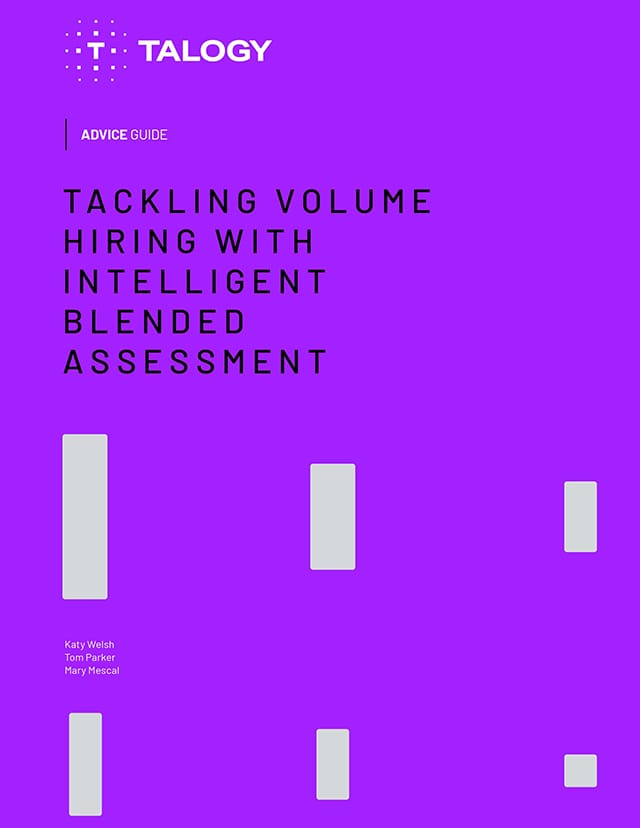Written by Danielle Desko, Marketing Manager
Previously published by PSI Talent Management or Cubiks, prior to becoming Talogy.
When tasked with the responsibility of recruiting and hiring in large volumes, the task can be overwhelming. In fact, you may not even know where to start!
Regardless of the volume, it all begins with having an effective and efficient hiring process. Whether you’re hiring a few or a few hundred, a robust hiring system helps you sort through candidates with ease and identify those that are most qualified for the position at-hand.
The first step in an efficient hiring process always starts with an automated, online job application system.
An interactive job application system engages candidates and allows applicants the opportunity to apply for open positions via a kiosk, at home, or most computers and devices with the Internet access at their convenience. If designed correctly, your entire application process should only take minimal time for candidates to complete and should automatically be able to identify and determine if a candidate is qualified for the next step in your hiring process.
In order to properly aid and enhance your decision-making to screen out candidates that are not qualified to perform the positions you are hiring for, your web-based hiring application process should include the following features:
Convenience & Accessibility:
Your online job applications receive more submissions if the system is available to applicants 24/7 and offers a variety of delivery options, such as in-person, through a kiosk, personal computers, tablets, or mobile devices over the web.
Customization:
You should be able to tailor your questions and scripts to your company, allowing candidates to receive an accurate description of the job and your organization as a whole.
Objective & Consistent Screening Criteria:
Your job application system should include standard withdrawal questions, “knock-out” questions based on the basic and minimum qualifications of the job, and voluntary Equal Employment Opportunity Commission (EEOC) and Office of Federal Contract Compliance Programs (OFCCP) questions, along with recruitment source questions. Informational-only questions can also be included to gather additional data from candidates that may be useful to examine in your hiring needs. When the aforementioned question-types are used in combination with one another, these questions screen out unqualified candidates, quickly classify qualified candidates to bring the best people on-board faster; furthermore, and more importantly, the questions do so in a fair and consistent manner that ensures legal compliance.
Job Fit Measurement:
As a hiring tool, your application should also assess each candidate’s “job fit” by asking simple questions about his or her likes, dislikes, and preferences. Much more, you can measure motivational fit with questions regarding specific characteristics of the job, such as willingness to travel, work schedule, and pay.
Flexibility:
With an ideal job application system, you should be able to turn the system on and off whenever needed. You should be able to limit the number of total applications by total number of applications received or also have the option to turn off after a designated number of applicants successfully pass the screening criteria. Additionally, you should be able to implement reapply policies in the system consistent with your company’s reapply policy to prevent the same candidates from submitting multiple applications.
Candidate Data Trackability:
Your hiring system should track where each candidate stands, their status at each step of the process, which recruiting sources are the most effective, and which points of the hiring application have the highest pass or fail rates.
While there are a number of hiring solutions available for high-volume recruiting and hiring scenarios, you should never compromise the robustness and efficiency of your hiring application system. After all, the application oftentimes serves as the initial (and most time-effective) screen of every applicant. Once you’ve conducted a preliminary candidate screening with an effective, fair and consistent online job application system, you’re now ready to take the next step in identifying the top talent to fulfill your high-volume hiring needs: in-depth hiring assessments.


